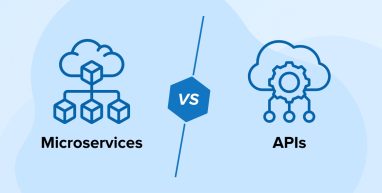
When discussing software design and integrations, you have probably come across two technical concepts: APIs and microservices. These concepts play a fundamental role in modern application development and design, showing a clear overlap in their applications.
It is crucial to differentiate between microservices vs APIs and understand their applications. By doing this, you may engage in more productive discussions with developers and enhance a deeper comprehension of the apps you utilize. Let’s explore more in this article!
1. What are Microservices?
A microservice is an independent service inside the microservice architecture, which follows a service-oriented design. It segregates various functions of an application into smaller units known as services.
The emergence of microservices allows teams to create software more modularly and agilely, eliminating the need for monolithic systems.
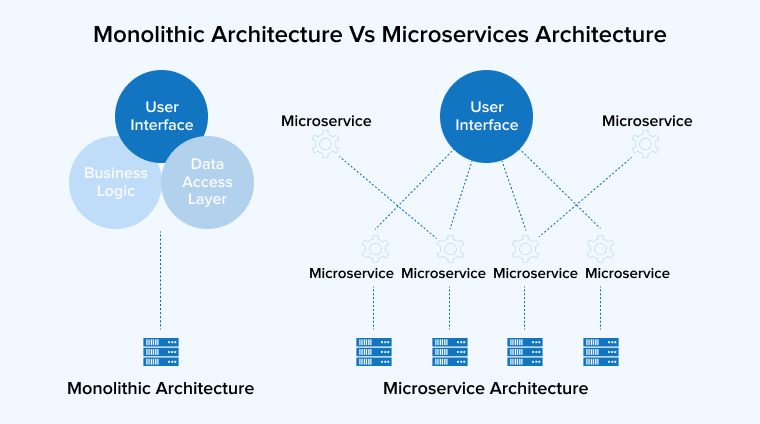
Further Reading on: Microservices vs Monolithic Architecture
1.1 Core Components of Microservices Architecture
Microservices comprise API, business logic, data access layer, and database as their core components. Let’s explore the extended version of several components.
- Customers: These can refer to programs, websites, or other services. Microservices design involves various types of customers that manage functions like search, configuration, and construction.
- Identity providers: Client queries are sent to identity providers for authentication and then relayed to internal services using an API gateway.
- Service Discovery: Service discovery facilitates deployment management and load balancing. This component includes a service consumer, service provider, and service registry. The service mesh employs a service company, service database, and service user to disperse workloads and adjust to deployment changes.
- API Gateway: The API gateway is crucial in enabling communication within the intricate distributed microservices architecture. The system may manage administrative duties, maintain an efficient load on the microservices, and perform necessary load balancing.
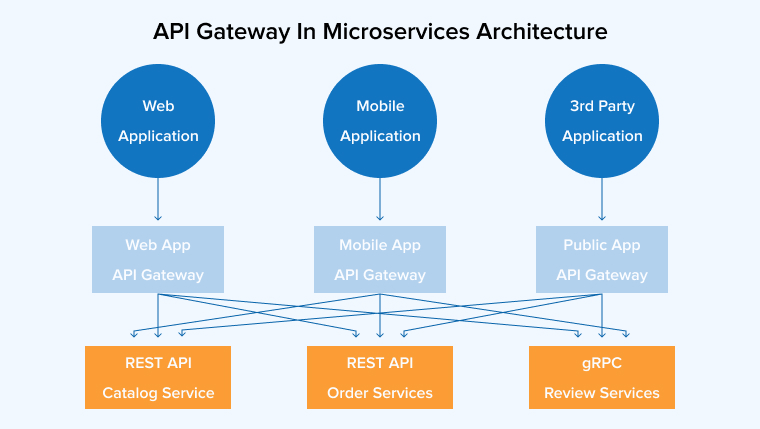
- Data handling: Microservices utilize separate databases to store data and execute business operations.
- Messaging: Microservices communicate with one another using messages to handle client requests. Messages can be categorized into two types: synchronous, where the server waits for a real-time response, and asynchronous, where the client acts without waiting for any answers.
- Static content: Microservices exchange data and transfer additional static information to a cloud storage service for direct distribution to clients through a content delivery network (CDN).
1.2 How Do Microservices Work?
Microservices consist of individual functions, each serving a specific purpose. One microservice might serve as a blank sheet of paper, another as a spellchecker, and a different one as a formatting tool. This approach mirrors dividing Microsoft Word into separate components
A microservices architecture breaks down applications into independent, reusable services that communicate with each other through an application programming interface (API). All services adhere to the same protocol for communication, like HTTP, and are structured around specific business processes. Then, the application incorporates these individual services one by one, along with the necessary data and dependencies.
Accordingly, it is easy to modify one feature without influencing other areas of the application. Modern software development approaches, such as DevOps, find microservices appealing due to their capabilities. Implementing microservices architecture is not the latest idea; it developed from more conventional methods and Service Oriented Architecture (SOA). However, new technologies like containerization have made it very popular.
You can run different parts of your app independently on the same hardware with more control using Linux containers.
1.3 Benefits of Using Microservices
A significant advancement in software development is the adoption of microservices architecture. Now, let’s move on and discuss the advantages of microservices.
- Modularity: To make an application easier to create, test, and comprehend, it is recommended to divide services into separate modules. Each module should encompass its own set of functionality and dependencies. As a result, the monolithic software development technique becomes less complicated and troublesome for enterprises.
- Distributed Development: By delegating tasks like service creation, testing, deployment, and growth to smaller teams, the microservices architecture speeds up development.
- Scalability: Without worrying about downtime, incompatibility, or rebuilding, you can expand those individual services independently and add new components.
- Optimized Functionality: Your development team can enhance the company’s functionality by breaking down the issues into its parts.
- Best Technology: Using microservices instead of a monolithic system allows you to choose different programming languages and data storage for each service.
- Seamless Integration: You can update your old monolithic program with microservices, integrating old and heterogeneous systems seamlessly. To further improve the functionality, security, and features of your application, microservices may be easily integrated with a wide range of technologies and tools.
- Better Team Curation: Each development team for an application gets a distinct function as a result of microservices. DevOps engineers may be responsible for more than one microservice.
- Resilient Architecture: Any modifications made to one part of a microservices-based program will not affect other parts of the application because of the isolation and distribution of components.
- Utmost Security: Since microservices-based solutions are composed of separate components, any threat to one component would not impact the others.
- Easier Maintenance and Debugging: The coding and debugging processes are simplified with smaller services. In contrast to the scenario where developers had to examine a large program with all of its features and dependencies, they can now examine the services as a whole rapidly to detect mistakes and problems.
- Faster Time to Market: You can speed up time-to-market by developing, testing, debugging, and deploying code more quickly without sacrificing quality. Instead of releasing everything at once, you may get early feedback and make improvements to your app more quickly. Doing so will aid you in developing top-notch apps that users like.
1.4 Examples of Microservices
Leading corporations like Amazon, Netflix, PayPal, and Twitter have shifted from traditional monolithic approach to microservices. This architectural approach has enabled them to succeed by providing easy scalability, increased company flexibility, and significant revenue generation.
eBay was originally a monolithic app written in C++ and Perl. It underwent a rewrite and was layered with Java in 2001. By 2005, its services were organized in an internal cloud using Java. In 2011, the company had 250 billion search queries, 4 billion page views, 75 billion database calls, and 9 petabytes of data.
With over 44 million lines of code, hundreds of thousands of classes, and tens of thousands of packages, the major challenge was handling the code and data complexities. They also encountered issues such as low service consumer productivity, latency on big datasets, and difficulties in various data formats like JSON, SOAP, and more.
In dire need of virtual infrastructure, eBay was finally migrated to microservices from the monolithic architecture. They broke down all components including the applications tiers and databases into different modules with reusable building blocks. The app components were then categorized based on their level of complexity. This came in handy, resulting in improved code management, developer productivity, and faster time to market.
eBay developed a few solutions while solving their challenges, which were later made open-source for the benefit of the developer community.
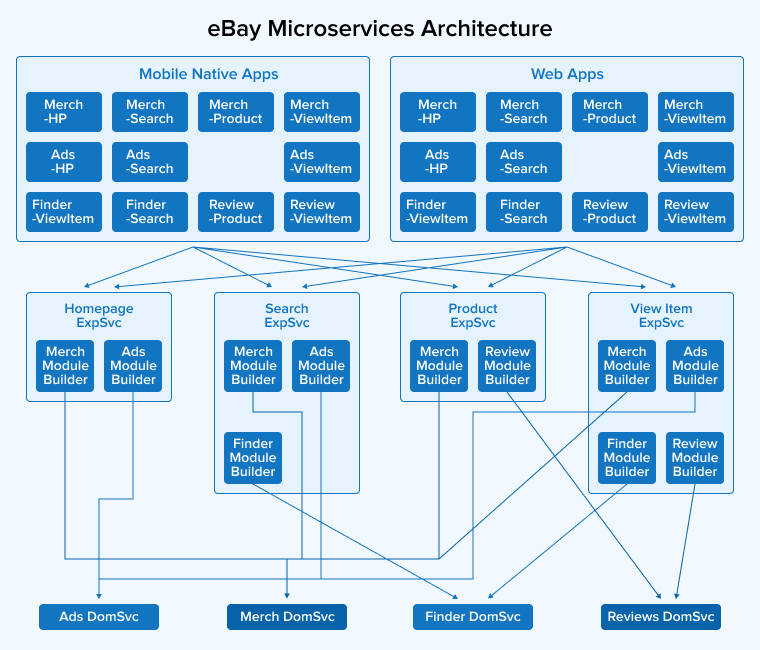
2. What is an API?
An application programming interface (API) is a collection of code instructions that facilitates communication between applications. In simple terms, it serves as a method for various applications to exchange data with one another. Here’s the Tweet from Rapid API explaining more about the API in a more interactive way.
What is an API pic.twitter.com/56Aj8mmL5D
— Rapid (@Rapid_API) July 2, 2022
2.1 Core Components of an API
By tracing the steps of a request, we can examine each component of a REST API. REST stands for Representational State Transfer. APIs that follow REST principles are known as REST API. REST API is the most widely used type of API.
1. API Client
There are various methods to initiate API requests. A user can start an API request by typing in a search term, clicking an icon, or scrolling through a list in a web or mobile app. External events, like a notification from a different application or service, can also trigger API requests. An API client is liable for gathering all necessary information and sending it to the API server, regardless of how the API request is triggered.
2. API Request
In response to user actions or external events, an API client is liable for initiating API requests. But what exactly is an API request? The format and behavior of an API request can vary significantly from one API type to another. To reiterate, the following elements comprising an API request to a REST API are the Endpoint, Method, Parameters, Request headers, and Request body.
3. API Server
After the API client has completed the request’s assembly, it will transmit it to the relevant endpoint on the server for processing. To provide the correct response to the client, the API server must manage authentication, validate input data, retrieve or modify data from a database, and so on.
The database isn’t technically an API component, but the API must function. The database stores and organizes application data in a manner that allows efficient retrieval and manipulation, while the API server retrieves and modifies this data in response to requests. Acting as an intermediary, the API server mediates communication between the API client and the database.
2.2 How Do APIs Work?
When users input data into a system, the application programming interface (API) relays that data back to the users. Even though this is the most basic way to explain how an API operates, there are additional components involved in its operation.

With an API, a programmer may call or submit a request to transmit data. The JSON programming language is used for this interaction by enabling the collection of information, updating details, adding and removing data, and performing other things. All it takes are four orders:
GET: Collect information
PUT: Update data
DELETE: Delete something (like product information)
POST: Create something (like a new blog post)
Many things you enjoy on the internet, including playing video games, shopping online, reuniting with old friends on Facebook, etc., rely on application programming interfaces (APIs). For two apps to communicate with one another and complete your request, an API acts as a middleman.
To buy bike parts from Amazon, for instance, you simply open the app and add the item to your cart. The interface will direct you to a page where you can enter your delivery address and payment details.
Here, the API allows programs to communicate with one another. For instance, if you’ve selected Google Pay as your payment processor, the app will share your banking information with another app for validation. The second app will then notify Google Pay to complete the purchase after verification and confirmation. The data exchange and payment will be completed by Google Pay once you have entered your PIN and continued with the transaction. Your order will be processed whenever that time comes.
Application programming interfaces (APIs) streamline the process of creating apps by facilitating communication between various parts of software. You would have the flexibility and authority to design and develop using an API.
2.3 Benefits of Using APIs
As the number of internet users and service consumers continues to grow, application programming interfaces (APIs) are playing an increasingly important role in today’s corporate environment. A few advantages of APIs are as follows:
- Speed: Using APIs, organizations and individuals can perform a wide range of activities at lightning speed. Businesses benefit from their agility, and consumers have fewer problems as APIs help speed up procedures. Consider this scenario: you want to place an online order. You can easily check if the item is in stock by simply accessing your smartphone app.
- Scalability: As a rapidly expanding company, one of your primary concerns should be the scalability of your technology stack. Over time, it will allow you to expand your business. The use of an API will provide you the scalability and flexibility necessary to manage more data, catalogs, products, and security issues effectively.
- Security: To make your app more secure, consider utilizing APIs. This is because while making an API request, you are not establishing a direct connection to a web server. Instead, you are only transmitting a small amount of data to the API, which then communicates to the server and retrieves the response. This process helps prevent hackers from compromising your app.
- Increases Productivity: Developers can add additional features more rapidly with the help of APIs, rather than starting from scratch. Businesses and developers will concentrate more on innovation, saving time and effort.
- Reduces IT Cost: There is a significant amount of resources required to build any application. To support your software development process, you’ll need resources such as technology, tools, people, and more. However, by using an appropriate API to construct or improve your app’s functionality cost-effectively, you can sidestep all of these problems.
- Promotes Collaboration: Due to rising security threats, enterprises are facing challenges to maintain smooth and safe connectivity and communication. But, if your company or team uses private APIs, you can improve team interactions and cooperation.
- Improved Customer Experience: APIs also provide advantages to users by providing easy communication between companies and their consumers and helping companies learn about their needs, preferences, and interests. In response, companies may use this information to enhance their products and services as well as fulfill customer needs in novel ways.
2.4 Types of APIs
Many web-based apps use APIs, which are generally well-received. APIs can be categorized as public, partner, private, or composite. It is essential to know the distinctions between these four types of APIs when planning their design, implementation, and usage.
1. Public APIs
Businesses that have made their application programming interface (API) public can openly share their data and applications with other businesses, partners, and developers. Partners can create new apps and utilize data for the company’s advantage because of this. The term “public API” refers to an open-source software development interface (SDI) that allows other developers, companies, and groups to access and utilize a resource.
2. Private APIs
Many companies utilize an internal API to connect their internal systems and data. The data should not be made publicly available or shared with third-party developers; these APIs are typically meant for internal usage only. A greater degree of confidentiality, less exposure to other organizations, improved management, and fewer data laws are some of the benefits of these APIs compared to public APIs.
3. Partner APIs
Through the use of partner APIs, businesses can grant their business partners extensive access to their data via a specialized API. A formal introduction procedure is in place to build these partner APIs, with access restricted to authorized third-party developers and API users. The primary goal of a partner API is to make business-to-business transactions. For example, a company may want to exchange customer data with third-party CRM providers on an as-needed basis. In such instances, a partner API can establish an open and secure connection between the internal APIs and the partner’s site.
4. Composite APIs
Making an API that is both easy to use and fast is crucial. It is not always easy to design an API that does both of these things. A composite API, on the other hand, is created by merging multiple APIs. It is often more advantageous to have a single API that addresses two or more components of a process, as it can help decrease complexity and enhance performance.
2.5 Examples of APIs
There is an API for almost everything these days. Various services, software solutions, websites, and many other platforms make use of them. For illustration purposes, let’s examine a few well-known APIs. While their end goal may be the same, the methods and standards they employ may differ.
1. E-commerce APIs
There are various types of web APIs, such as eCommerce APIs. They can facilitate the following tasks: product display on e-commerce sites, product shipment, order and payment management, currency conversion, and so on.
- A web API for product data allows you to gather product details from your website and present them to users.
- Payment APIs act as intermediaries between your website and the payment processor, facilitating the collection of electronic payments.
- Your users can have shipping prices calculated based on distance using the Shipping API.
2. WeatherAPI
One great example of an API is WeatherAPI, which provides free geolocation and weather data. Weather APIs are beneficial for many purposes, including astrophysics, sports, weather predictions, IT searches, and time zones.
3. Yelp API
Yelp API is built on the GraphQL framework that businesses like restaurants, stores, and hotels use to gather feedback from their patrons. Customers can browse public reviews to make an informed decision about the company’s suitability for their future needs.
Online banking, playing games, browsing social media, making online purchases, and extracting information from websites are some common examples.
3. Can Microservices and API Work Together? How?
Microservices are self-contained, small components that can be scaled and delivered without affecting one another. Because of this, they are more complicated, but also more adaptable and scalable than monolithic designs.
Having a collection of small components isn’t enough; they must also be able to communicate with one another. Application programming interfaces (APIs) are useful for this purpose. An API is a protocol that defines the relationship between two software components. One way for other microservices to communicate with a specific microservice is through its API.
Take a microservice that uses a database as an example. For this data to be shown on a website, it may be necessary for another microservice to retrieve it. An API detailing the desired data structure and access methods is necessary for communication between these two services. The data-storing service can be communicated with by any number of other microservices after this API has been created.
To summarize, microservices are decoupled, self-contained parts that can be easily deployed and scaled independently. The rules for data structure and access are defined through APIs, which allow seamless communication with one another. As a result; an architecture becomes more adaptable and easier to scale.
4. Differences Between Microservices and APIs
Here is a useful comparison table to aid in your comprehension of microservices versus APIs.
| Factors | Microservices | APIs |
|---|---|---|
| Scope | Architectural methodology that divides an application into a series of interconnected services. | Protocol-based communication method is used for interacting with services and web applications. |
| Access | Utilize APIs to establish connections with each Packaged Business Capability. | Utilized by one service and made available over the internet. |
| Functionality | Use APIs to connect with services. | Make services available for use. |
| Objective | Provides separate elements. | Act as interfaces. |
5. Conclusion
There are significant differences between microservices and APIs. They serve distinct purposes in online apps and are not interchangeable. When it comes to building a web application, microservice design offers more agility, and application programming interfaces (APIs) give the necessary capabilities for linking, extending, and integrating software.
TatvaSoft is a software development company. Our agile development services assist businesses in creating dynamic web and mobile apps. Get in touch if you’re considering transitioning from monolithic to microservices.
Frequently Asked Questions
Is microservice the same as API?
The concept of microservices refers to a method of developing software that divides operations into smaller, more manageable parts. Application programming interfaces (APIs) allow communication between different smaller parts. To allow microservices, APIs can be utilized. However, they both are different concepts.
Do microservices communicate via API?
Yes. they can. Successful microservice communication occurs via “REST APIs” between services, data storage, and other parts of the infrastructure.


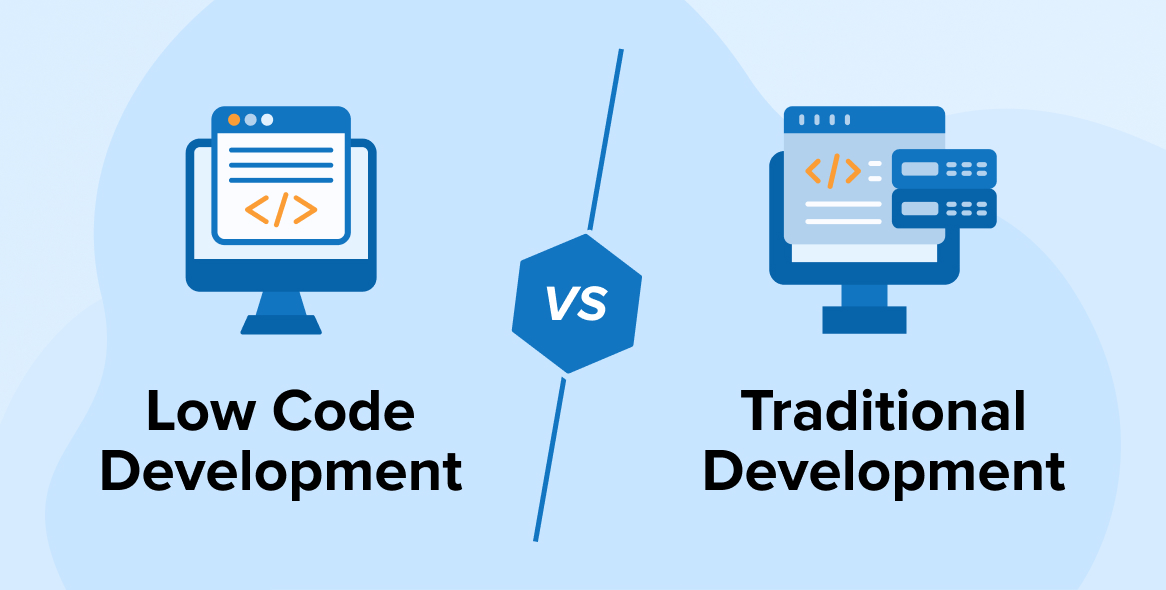
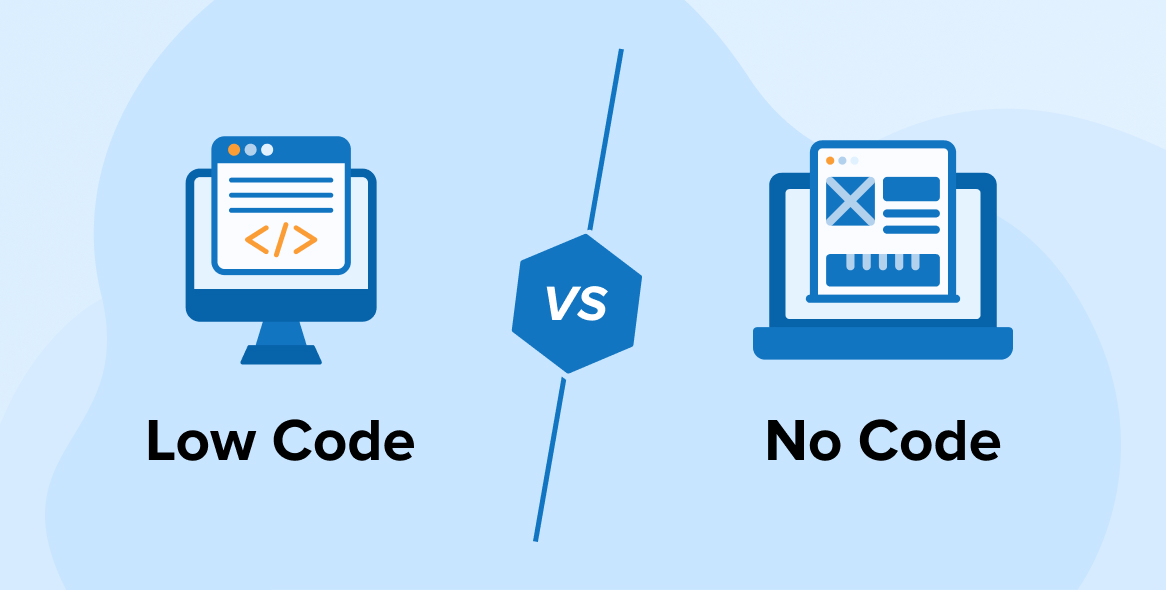
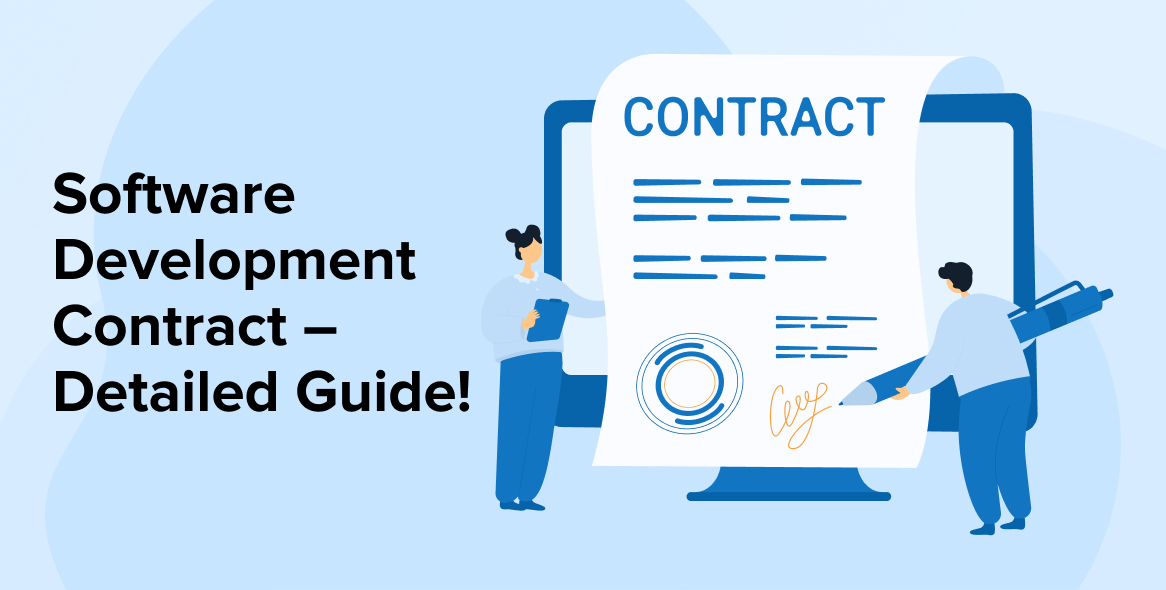

Comments
Leave a message...